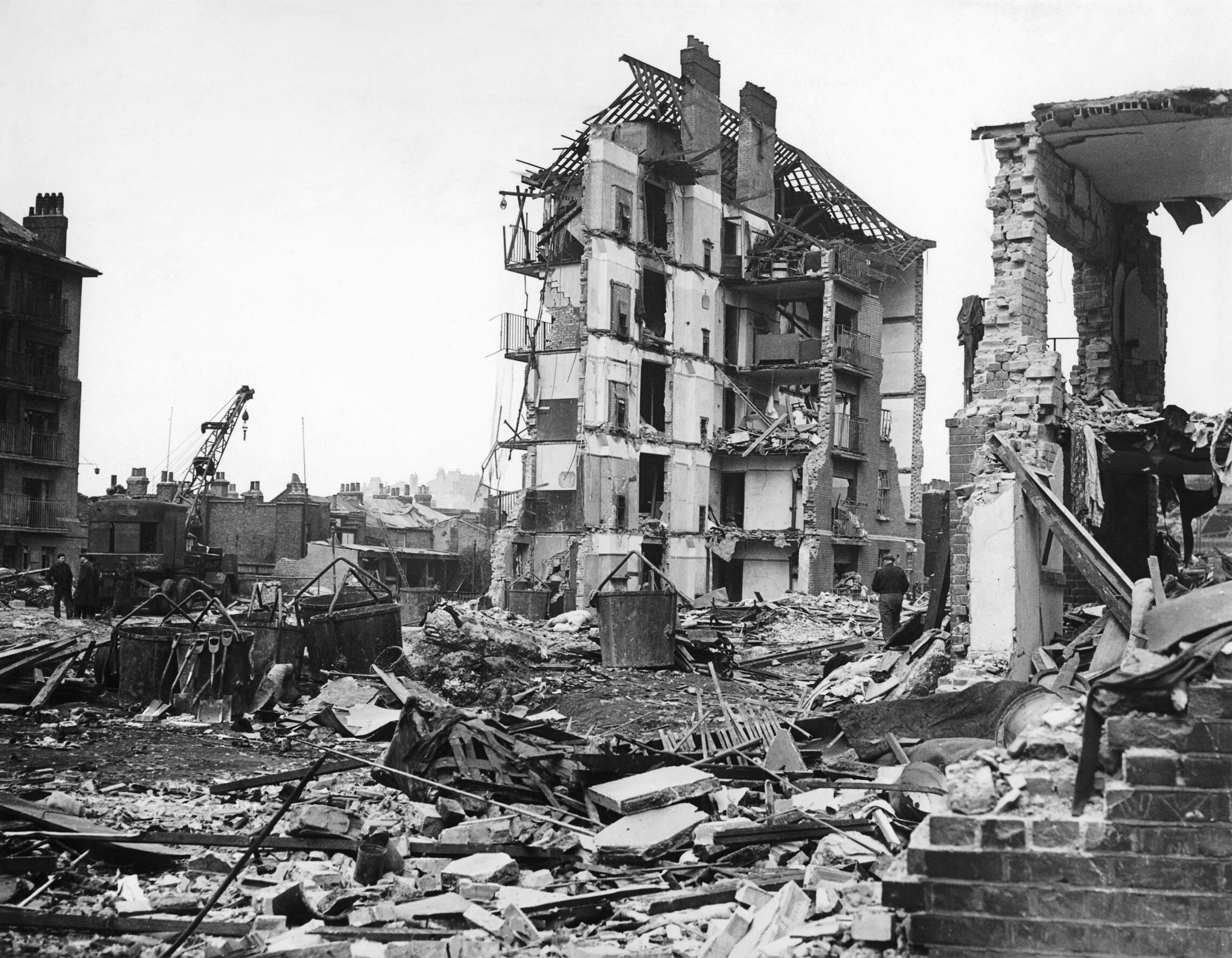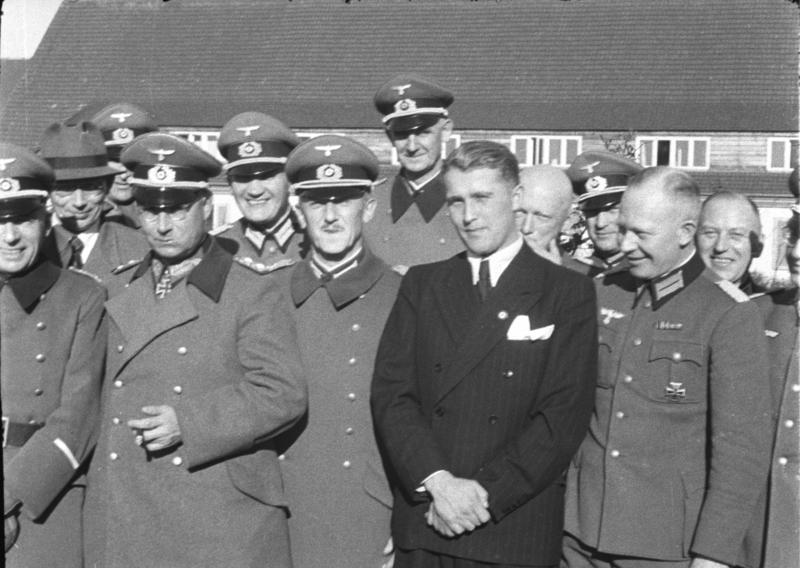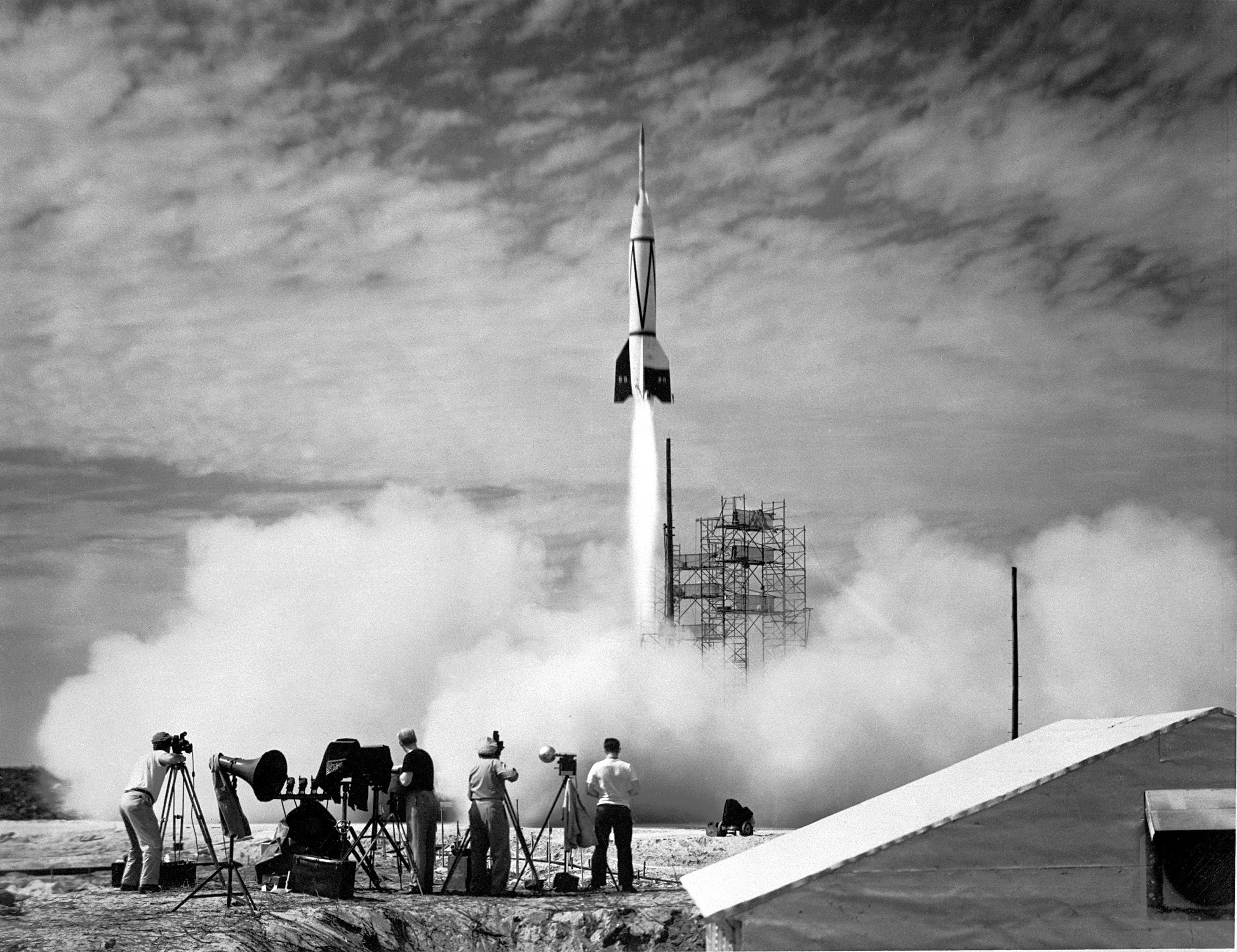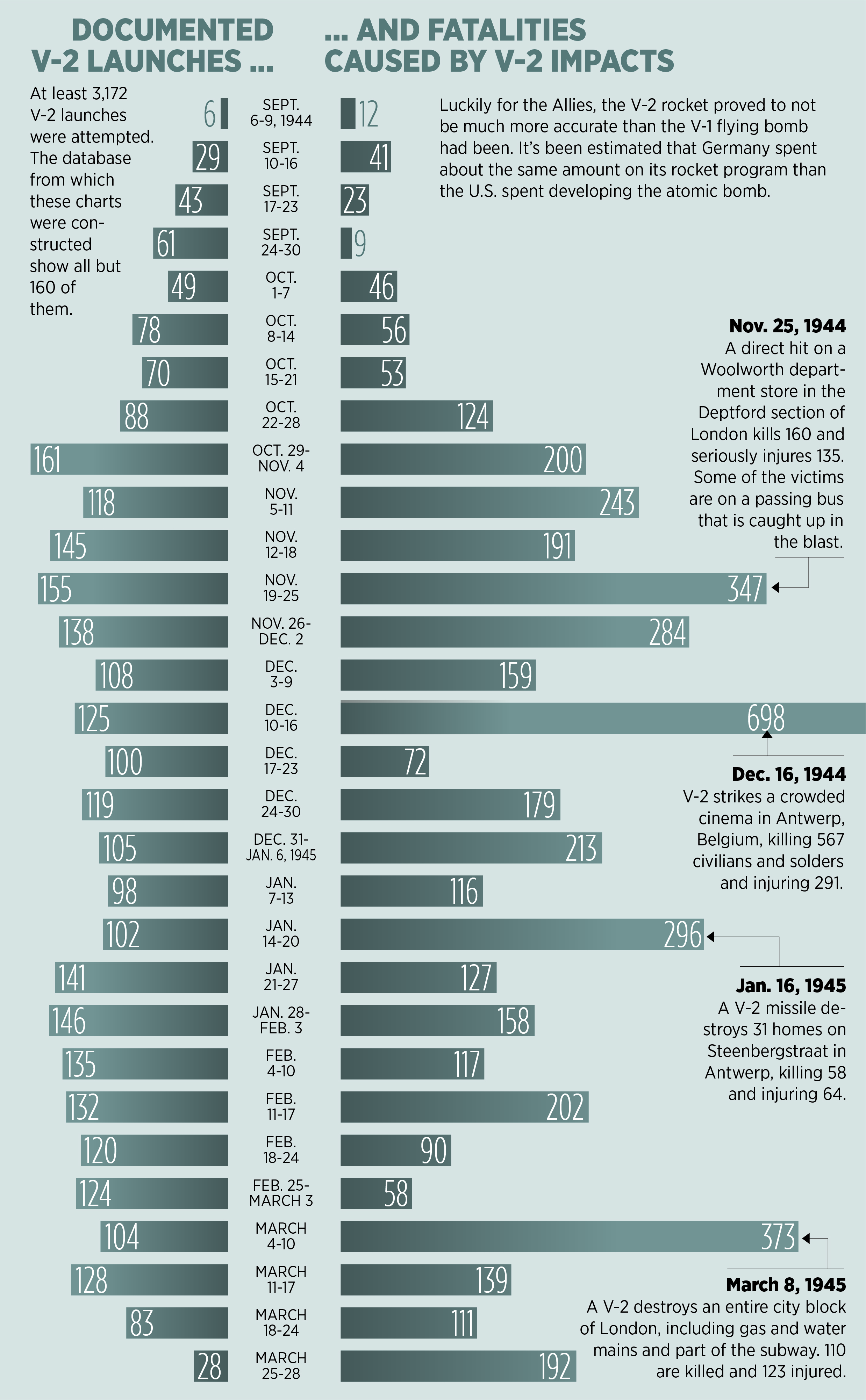
The 'Vengeance' Weapon: The V2 rocket's development and fatalities
On Sept. 8, 1944 — 80 years ago today, September 2024 — Nazi Germany made its first successful launches of its V-2 rockets. Two were aimed at Paris, which had been liberated by the Allies just two weeks before. Two more were fired toward London.
Over the next seven months, more than 3,000 V-2 rockets would be used against targets in England, Belgium, France and the rest of Europe. The world’s first ballistic missile was overseen by a German scientist who’d go on to develop the Saturn V rocket that put Apollo 11 on the moon in 1969.
The Development of the V-2 Rocket
Not long after D-Day in June 1944, Germany began using a small pilotless weapon — essentially, an early cruise missile. The V-1 flying bomb — the V stood for “Vergeltungswaffe,” or Vengeance weapon — was guided by an autopilot system that proved not very accurate. Residents of London — toward which 8,600 V-1s were fired — called them “Buzz bombs,” for the noise the pulse-jet engines made as they approached.
Unlike the V-1. Germany’s next Vengeance weapon, the V-2 couldn’t be intercepted by aircraft or anti-aircraft gunfire. The V-2 was launched 60 miles into the stratosphere and then it fell onto its target at several times the speed of sound, delivering an explosive warhead that could weight up to a ton.
The V-2 rockets — and the V-1 flying bombs — were built in underground factories by concentration camp laborers. An estimated 10,000 prisoner slaves died while making them.
German rocket scientist Werner von Braun had developed a fascination with the possibility of space travel when he was a boy. He was hired in 1932 to work for the German army’s rocket program and became the driving force behind development of both “Vengeance” weapons.
On Sept. 6, 1944 — just 12 days after the German garrison surrendered Paris to the Allies — the V-2 was ready to fly. Two were launched from sites in German-occupied Belgium and aimed at the French capital. Both suffered the same malfunction: The rocket lifted off, rose a few feet, and then settled back onto its pad when its engines cut off early.
Two days later, launch teams tried again from that same site and two others. Two were aimed at Paris and two at London. One exploded shortly after liftoff. One hit southeast Paris, killing six and injuring 36. The other two hit in the Chiswick area of London and in Essex, north of the city. Those killed three and injured seven.
V-2 launches would continue for the next seven months. More than 3,000 would be launched. Some would misfire or explode on launch. Some would detonate over the ocean. But enough would hit populated areas, killing thousands of civilians.
Mobile launchers were moved frequently as Allied troops moved deeper into Germany in 1945. After the V-2 project was halted in March, von Braun fled the base where he and his team were stationed and surrendered to the Americans.
The U.S. government welcomed him and 126 of his team — and their families — to America to work on missile programs for the U.S. Army. Von Braun’s team developed the Redstone and Jupiter missiles. In 1960, Von Braun was transferred to NASA, where he led development of the Saturn V rocket.

Credit: Imperial War Museum
One of the last V-2 missile strikes was on the apartments of Hughes Mansions in East London on March 27, 1945. The attack killed 134 people and seriously injured 49.

Credit: Bundesarchiv
Von Braun would say later that he had joined the Nazi Party only in order to continue his work on rockets. “My membership in the party did not involve any political activity,” he said.

Credit: U.S. Army
In addition to von Braun’s team, the U.S. Army brought back enough captured V-2 parts to build 25 rockets that were used in various scientific tests through 1952.
